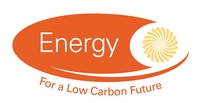Targeting new and cleaner uses for wastes and biomass using gasification
Abstract:
Gasification with integrated syngas clean-up to remove undesirable components can be used to produce an “ultra-clean” syngas suitable for use in demanding and efficient applications including reciprocating engines, gas turbines, chemical synthesis processes (for example, to produce hydrogen, fuels or chemicals) and/or biological synthesis processes. It offers a number of benefits including:
- flexible in feedstock and outputs (heat, power, liquid and gaseous fuels, and chemicals)
- high efficiencies scalable to suit applications in typical UK towns and small cities, in particular at the sub 10 MWe scale
- ability to be combined with CCS to create “negative emissions” which ETI anticipates will be needed to deliver a cost-effective 2050 low carbon energy system
Publication Year:
2017
Publisher:
ETI
Author(s):
Evans, G.
Energy Category
Class Name:
Subclass Name:
Category Name:
Language:
English
File Type:
application/pdf
File Size:
4790693 B
Rights:
Energy Technologies Institute Open Licence for Materials
Rights Overview:
The Energy Technologies Institute is making this document available to use under the Energy Technologies Institute Open Licence for Materials. Please refer to the Energy Technologies Institute website for the terms and conditions of this licence. The Information is licensed "as is" and the Energy Technologies Institute excludes all representations, warranties, obligations and liabilities in relation to the Information to the maximum extent permitted by law. The Energy Technologies Institute is not liable for any errors or omissions in the Information and shall not be liable for any loss, injury or damage of any kind caused by its use. This exclusion of liability includes, but is not limited to, any direct, indirect, special, incidental, consequential, punitive, or exemplary damages in each case such as loss of revenue, data, anticipated profits, and lost business. The Energy Technologies Institute does not guarantee the continued supply of the Information. Notwithstanding any statement to the contrary contained on the face of this document, the Energy Technologies Institute confirms that it has the right to publish this document.
Further information:
N/A
Region:
United Kingdom
Related Dataset(s):
No related datasets
Related Project(s):
Related Publications(s):
Advanced waste gasification, future strategies and potential outputs
Bioenergy crops in the UK: Case studies on successful whole farm integration evidence pack
ETI Insights Report - Bioenergy - Enabling UK biomass
Energy From Waste : Executive Summary
Energy From Waste : Executive Summary - WP1.3 - Final Waste Report
Energy From Waste : Executive Summary - WP2.2 - Technology Assessment
Energy From Waste : Executive Summary - WP3.3 - Technology System Improvement Opportunity Report
Energy From Waste : Executive Summary - WP4.2 - UK Benefits Case
Energy From Waste : Executive Summary - WP4.2 - UK Benefits Case - Compatibility with CCS
Energy From Waste : Project Overview
Energy From Waste : WP1.1 - Current Waste Data and Collection Plan Report
Energy From Waste : WP1.2 - Initial Waste Assessment
Energy From Waste : WP1.3 - Final Waste Assessment
Energy From Waste : WP2.2 - Appendix D - Power Generation
Energy From Waste : WP2.2 - Technology Assessment Report
Energy From Waste : WP3 and WP4 - Key Legislation and Constraints for Energy from Waste Technologies
Energy From Waste : WP3.1 - Report on Selected and Validated Models
Energy From Waste : WP3.2 - System Model Development Report
Energy From Waste : WP3.3 - Technology System Improvement Opportunity Report
Energy From Waste : WP3.3 - Technology System Improvement Opportunity Report - Executive Summary
Energy From Waste : WP4.1 - Project Framework Deliverable
Energy From Waste : WP4.2 - UK Benefit Case Report - Syn Gas for Grid Injection
Energy From Waste : WP4.2 - UK Benefits Case - A Review of Biomass to Liquid Fuels via Pyrolysis Oil
Energy From Waste : WP4.2 - UK Benefits Case - Syn Gas for Fuels and Chemicals
Energy From Waste : WP4.2 - UK Benefits Case - main report
Infographic - 10 years to prepare for a low carbon transition - Bioenergy
Infographic - Targeting new and cleaner uses for wastes and biomass using gasification
Overview of the ETI’s Bioenergy Value Chain Model (BVCM) Capabilities
Targeting new and cleaner uses for wastes and biomass using gasification - Presentation



